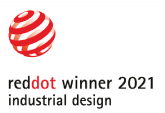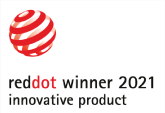It turned out that metal cleats designed to prevent skateboarding on the park’s retaining walls were pried off. And sure, that’s not cool. But all I could think when seeing the headline was, “I wonder if the retaining wall wanted to be skateboarded on?” Two days later my wife and I were walking our awesome dog Gus through the park. It was re-opening day, and as we walked, Gus was relentlessly attempting to parkour on these same retaining walls. Abby looked at me and said, “These walls are asking Gus to jump on them.”
Walls wanting to be skateboarded on and asking a dog to jump on them are an example of what’s called an “affordance” in design. An affordance is a clue about how an object should be used as provided by the object itself. My favorite book on this topic is The Design of Everyday Things by Don Norman. In fact, in the book, Norman uses skateboarding as one such example of an affordance.
There’s a psychology behind how an object speaks to a user, including the psychology of dogs apparently. When an object speaks to you, it may be through product attributes, such as the way a door handle is designed to be pulled, versus a plate to be pushed. However, there are often non-product (or brand) attributes that can affect how the product is used (if used at all). Such a brand attribute may make a product seemingly jump off the shelf. What was it about the design of the packaging, product, label, etc., that spoke to me? There’s psychology behind that. There’s an intentional design behind that.
When done right, those designs are iconic.
When done wrong, those designs are overlooked or misused.
How important are brand attributes?
My specialty is in medical devices, so I think a lot about the intended use of a product. Imagine an emergency situation and I can’t find the product I’m looking for. Imagine a different experience where the product itself jumps off the shelf, out of the medic bag, or off the sterile tray (all figuratively speaking) thus drawing my attention to it right at the moment when I need it most.
Imagine a brace so complicated, the patient doesn’t use it, and then re-injures themselves for non-compliance and not adhering to prescribed rehabilitation treatment. Now imagine a different experience, where the brace’s non-product attributes are asking the user to wear it, and its product attributes afford the user a seamless and intuitive experience to put on.
Just how important are these brand attributes?
“At a recent on-site meeting with an industrial client, the topic of resistance to a non-product feature (it was the color of a fabric) was hotly debated as not significant versus considered premium by the consumer. Well, if this brand asset happens to speak to the user, it could be the difference between sale and no sale (much less a premium sale).”
How do we meet these challenges?
So what do we do about a wall that is asking skateboarders to skate on it and dogs to parkour on it? If the design is asking to be used in a particular manor, rather than add a deterrent, like a metal cleat, instead take a step back. What do we want this retaining wall to ask for? What are the ways it can be misused? And then set forth on designing a wall for the intended use. It’s absolutely possible to design an aesthetically beautiful retaining wall that speaks on its own to passers by, “Please don’t cross me, but please do sit down on me when you need a rest, and definitely don’t skateboard nor parkour on me.”
In practice here at Trig, a great example is the Redbud Labs Stage. In this case the challenge was to eschew the character of typical laboratory devices and speak to the user its promise of speed by embodying the features of a dynamic animal ready to jump off the lab bench.
When design is done poorly (not considering such affordances and branding), the consequences can be as frustrating as vandalism, as detrimental as a lost sale, or, in the case of medical devices, as serious as loss of life or limb. When done right, the products are iconic, eyeballs are attracted to it, and the use is proper.
Recently here in my hometown of Raleigh, the central park of our city reopened after a two-year, $13 Million renovation. And just two days before its scheduled re-dedication, local news headlines read something like this: “Raleigh’s renovated Moore Square vandalized just before grand re-opening, police say skateboarder to blame.”



